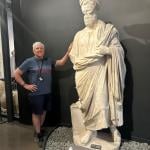I’ve been meaning to write an entry on Charles Murray’s book Coming Apart: The State of White America, 1960-2010, for a few weeks now. The book is divided into two main parts that address two sizable chunks of the population, elite White folks and lower-income White folks. You can skip Part I if you’ve read Bobos in Paradise or your fill of David Brooks columns–it basically talks about the rise of the meritocrats/creative class/latte-town. Murray’s contribution is documenting the rise of SuperZips, clusters of highly educated, influential folks in various pockets (including but not limited to people who watch Portlandia and their parents, people featured in Stuff White People Like, etc.). 
Part II documents how distinct the trends are re: taste, behavior, educational attainment, employment, income, religious service attendance, marriage, etc. between elite White folks and their lower income counterparts. It’s mostly descriptive stats, but you can tell a good story w/cross-tabs. It’s pretty interesting, seeing how not just elite education but also marriage, church attendance, holding a job with health benefits, etc. are increasingly becoming part of the cultural capital tool-kit.
Some rough draft thoughts.
1) This book is painful to read in parts. Not a huge surprise, Charles Murray co-authored the Bell Curve. Enough said. Still, Murray is better at talking about White people than people of color, so better this book than Bell Curve II.
2) For all of its painfulness, it raises some compelling and interesting points on the (elite) White flight out of…being in close proximity and community with other lower-income White folks. What happens when socioeconomic integration among Whites…disintegrates.
3) He’s smart in sticking to descriptives versus causes. He ails when he tries to use his findings to prove that class trumps race in affecting opportunity in America. (someone get this guy a handout on intersectionality)
4) Religion and church are all over this book, mainly as an outcome but also as an implied cause for some of the breakdown (a big worry since religious congregations are the country’s top source of social capital acc to Putnam). Ross Douthat has been blogging about this. It’s making me think/wonder about the role of multiracial churches in different socioeconomic contexts, both the possibilities and limitations of them. It also makes me think about the role of ethnic-specific ministry as a source of social capital if it can encourage socieoconomic integration.
5) A big theme of my work is the intersection between structure and culture, how broad-scale structural conditions affect people’s perceptions of what is normal and expected, and over time, the amalgamation of the two as they influence one another in a feedback loop. Virtue doesn’t happen in a vacuum,* certain groups don’t just happen to work hard or randomly want to attend college–there are structural and socioeconomic conditions that under gird people’s assumptions of what’s normal, and over time, these conditions reproduce (further contributing to people’s sense of what’s normal/expected of them). Murray makes me think about how this plays out for White people across social class.
6) Elite, “meritocratic” education is also all over this, both as a cause and outcome. It’s hard to go home again, and elite college grads tend to flock to cities and affluent burbs, meaning that they’re less likely to invest in the communities they once called home. Fewer contemporary counterparts of J. Irwin Miller (or Marian the Librarian) go back to places like Columbus, Indiana (/River City, Iowa).
7) All of this makes me think of growing up and coming back to Ohio (I spent two years teaching at Miami University before moving to University of Maryland, College Park), the contrast between living in the affluent burbs versus a rural area, the experience of going to church with people with whom I had very little in common other than a shared faith and in some cases, an affiliation with the university. It wasn’t easy, but I look back on it as one of my most valuable experiences, being in a multi-generational community with people whose political affiliations, life experiences, etc. were so different from my own. That type of experience is a lot harder to opt into when you have all of the choices in the world.
Coming Apart: A totally painful read but also pretty thought-provoking.
*I don’t mean to convey that any social class or people group has a monopoly on virtue/hard work/values, more that social class/structural conditions tend to enable certain people in turning aspirations and desire into concrete gains, and vice-versa In his review of Coming Apart, Bradford Wilcox notes how globalization has undercut job security, which makes it harder for families to stay together, etc. I have an upcoming article on how most students recognize the value of a college education, but East Asian Americans are able to access information and resources via ethnic economies and social capital networks that help them turn aspirations into educational gains.











